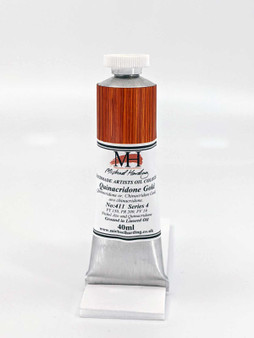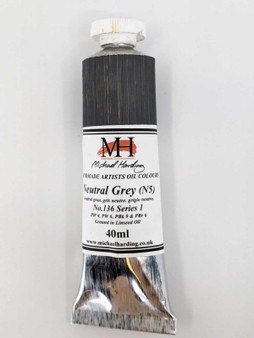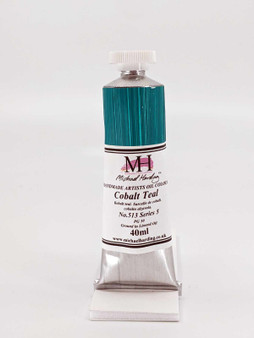Product Description
From Michael Harding:
Inorganic, natural earth – A genuine earth from Afghanistan the purest and oldest form of the Lapis Lazuli pigment. Lapis was the inspiration for the modern synthetic ultramarine blue whose colour is a deeper less dirty blue than Lapis; the handling qualities are identical. This is the blue that the Old Masters used for centuries. This pigment is still very expensive and rare. Lapis Lazuli and Azurite are a family of natural earth pigments and were the source of the famous blues of the Middle Ages.
There are plenty of books that deal with this subject superbly but I feel it’s appropriate that I say a few things about it
The first and most noticeable thing about Lapis compared to the modern synthetic equivalent ultramarine blue, is the considerably less tinting and covering power and its slightly dirtier colour, though neither of these traits should be seen to detract from the natural beauty. If you are looking for a blue of great sharpness with huge explosive possibilities and tinting ability that can almost poke your eye out, even when intermixed with just about any colour, try phthalocyanine blue instead! Lapis is a different creature altogether. My own inclination is to almost create the painting for the colour rather than the colour for the painting.
When combined with Terre Verte and other earth colours Lapis is at “home.” Spread out as a wash drawn across a landscape at horizon line and it’s done, Lapis almost paints itself. Alternately added as a toner to cool shadows in portraits the choices, of course, are yours and as I always say it’s you the artist who has to do the hard part!
When I first assessed the feel and nature of the pigment it was instantly clear it would have to be milled/dispersed with great care and very gently. Hand grinding was interesting but didn’t quite yield its inner nature as the crisper colour isn’t quite achieved in this way so I elected to use a stone roller mill. The relationship of stone and oil to stone seemed more harmonious; to have used a steel roller machine would have been sacrilegious to say the least. Its texture is slightly granular almost fluffy in its body, when stroked between fingers you can feel the slight sandy particles are up to 20 microns in size which is of course minute. The synthetic Ultramarine Blue feels more like a gel as if there are no particles as the particles are less than a micron in size. I do see that the making of Lapis was a great challenge and I feel almost nervous yet possessive about making it available.
In the summer of 2007, I met David Hockney and Lucien Freud at the Royal Academy in London. David at the time was showing his giant tree painting privately, I thought it would be fun to present both artists with a tube of Lapis each. I must be honest thinking about the nature of both artists’ works as I had expected more of a reaction from Lucien. I am delighted to say that it was David whose interest and subsequently placing of a substantial Lapis request that swung me in favour of adding it to our range. As with all oil colours to achieve the best in terms of lightfastness I suggest you cure Lapis oil paint in a good light as this alleviates the nature of linseed to go murky.











